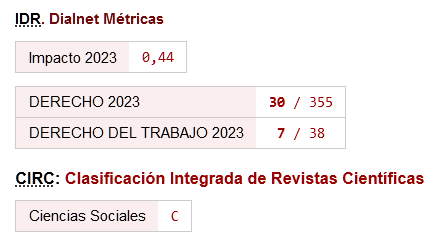Technology and occupational risk prevention in state-level collective bargaining
DOI:
https://doi.org/10.46661/lexsocial.10823Keywords:
Technology, occupational risk prevention, teleworking, disconnection, cyber-bullyingAbstract
The paper examines the complex relationship between technology and occupational health and safety in collective bargaining, highlighting several crucial aspects for the protection of workers. First, the introduction of digital media in the workplace, which will require the adoption of preventive measures related to adequate and sufficient information and training and consultation with legal representatives prior to implementation and on the proper use of the devices. Secondly, the right to digital disconnection and the necessary policies to ensure quality rest time to allow the worker to recover from work and to reconcile, as well as actions aimed at training, prohibiting and sanctioning attitudes that aim at permanent connection; third, the protection of such precious assets in teleworking and the protection of workers' health and safety at work. Thirdly, protection of such precious assets in teleworking, where the few agreements that do include clauses detailing, among others, obligations and responsibilities, the provision of equipment and associated costs, workspace ergonomics, mandatory training and, most controversially, privacy at home. Finally, cyberbullying, where the protocols establish disciplinary measures and aim to promote a safe and healthy working environment, adapted to the challenges of remote working in today's digital context.
Downloads
Downloads
Published
How to Cite
Issue
Section
License
Copyright (c) 2024 Cristina González Vidales

This work is licensed under a Creative Commons Attribution-NonCommercial-ShareAlike 4.0 International License.
-
Atribución — Usted debe dar crédito de manera adecuada, brindar un enlace a la licencia, e indicar si se han realizado cambios. Puede hacerlo en cualquier forma razonable, pero no de forma tal que sugiera que usted o su uso tienen el apoyo de la licenciante.
-
NoComercial — Usted no puede hacer uso del material con propósitos comerciales.
-
CompartirIgual — Si remezcla, transforma o crea a partir del material, deberá difundir sus contribuciones bajo la misma licencia que el original.



 @Lex Social
@Lex Social Linkedin
Linkedin @lexrevista.bsky.social
@lexrevista.bsky.social


